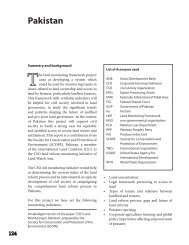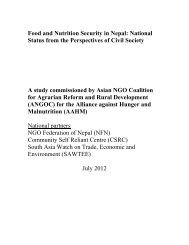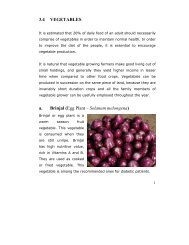Traditional Practices in Agriculture FULL - ANGOC Site
Traditional Practices in Agriculture FULL - ANGOC Site
Traditional Practices in Agriculture FULL - ANGOC Site
Create successful ePaper yourself
Turn your PDF publications into a flip-book with our unique Google optimized e-Paper software.
c. Grapes (Vitis v<strong>in</strong>ifera)<br />
Grapes are very tasty fruits<br />
that supply nourishment to<br />
human body and provide a<br />
sort of refresh<strong>in</strong>g when<br />
consumed. They are easily<br />
digestible and possess<br />
calcium, phosphorus and<br />
iron and other m<strong>in</strong>erals.<br />
1. Long trenches are dug at a spac<strong>in</strong>g of 10 feet three months<br />
before plant<strong>in</strong>g. In these trenches green leaf manures like<br />
Kol<strong>in</strong>gi (Tephrosia purpurea) Agave spp. and Ekka (Calotropis<br />
sp.) are applied and covered with soil and allowed to<br />
decompose.<br />
2. Neem cake powder is applied at 500 gm per acre to control<br />
the nematodes.<br />
3. Cover the grapes bower with coconut or Palm fronds on its<br />
sides to avoid w<strong>in</strong>d damage to the fruits, free passage of birds<br />
<strong>in</strong> to the bower and protect from scorch<strong>in</strong>g due to heat waves.<br />
4. Groundnut cake is powdered, soaked <strong>in</strong> water overnight and<br />
poured to grapes at one bucket per pit, for better fruit quality<br />
and yield.<br />
5. A portion of the berries at the tip of each bunch may be<br />
th<strong>in</strong>ned to ensure better fruit size.<br />
6
















